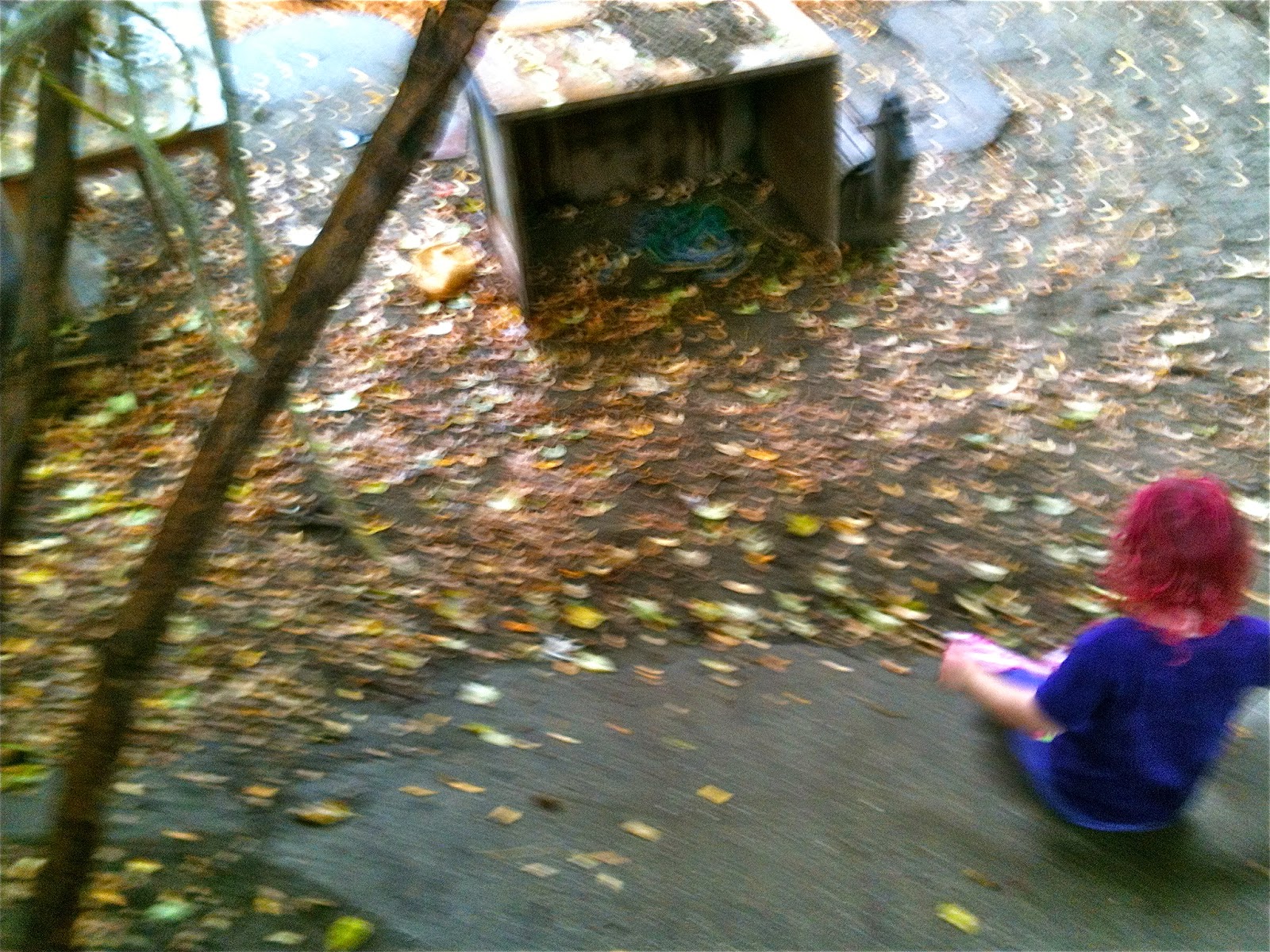Our 3's class discovered
the concrete slide yesterday. Or rather, since most of them have known about the concrete slide for at least a year already, I should say they rediscovered it yesterday.
It started with Alexa wondering how to "get up there."
I said, "Maybe we could go straight up there," pointing up the face of the concrete slide.
"No, Teacher Tom, I don't think I can go up that way. It's too steep for me."
I said, loudly enough that others could hear me, "We're wondering how to get up there."
"I'll show you!"
"I'll show you!"
They took one of the side routes, remembering it from last year, up through the lilacs where years of little feet have moulded stairs from soil and roots. Others went around the other side with it's similar pathway. There was a real charge for the top, with at least 10 of them making the ascent.
Romi was the first to slide down, finding it quite unpleasant in her tutu and bare legs. She winced, but didn't complain, nor, understandably, did she try the slide again.
I had some wisdom to impart. Picking up a square of old metal mesh shelving, I said, "Some of the big kids like to sit on these to slide down so they don't hurt their bottoms or tear their clothes." We have a half dozen or so of these squares.
"I want one!"
"I want one!"
I made a game of tossing them up to where the children stood in a row at the top of the slide, with the squares sliding right back down, until Acadia got the idea of stomping on one to keep it up there with her. After some maneuvering, she managed to perch atop the square and zip down. I've tried this before, it's a short, rapid ride, that ends with a solid thump as the square is stopped suddenly by the sand at the bottom, often tossing the rider forward, headlong into the sand. This happened to Acadia who popped up and declared it "fun." This motivated her friends to employ the stomping technique to secure squares of their own.

Not all of those who ascended slid back down. Some, like Alexa, were content to watch, perhaps acquiring knowledge to be used at a future date, taking satisfaction in simply being able to climb up there, then climb back down. Others decided they weren't ready for the first-hand knowledge of a speedy slide, so instead carried their squares to the top just to let them slide down on their own, following them on the seats of their pants, a slower, surer way to go.
There were two significant emotional scenes that rose to the level of adult involvement. Two children fought over a rope, each claiming to have had it first. I more or less stood there holding the middle of the rope, echoing the words of each child until, after a good five minutes, they started talking about something else, their tears dried up, letting the rope drop to the ground, not resolving it as much as just letting it go. Some of life's conflicts must be resolved like that.

In the other instance, Cecelia, who had managed to get herself in a position to slide, found herself intimidated by the prospect and cried for her mother who took the position that she wouldn't help her, but also wouldn't let her get hurt. Still crying, Cecelia finally let herself go, hitting the bottom still in tears. Still crying she picked up her square and made her way back to the top, where, still crying, she did it again.
Letting her feelings flourish and getting on with her life of doing until she wasn't crying any longer.

A few of the kids, like Kai, have been climbing up here for a year or more, but for most of them, this was one of the first times they've managed it, let alone to slide back down. They taught one another how to do it, a hive-mind protect if there ever was one. All we, the adults, did was wonder loudly, help with emotions, and introduce the mesh squares.
Like the older kids with their game of tires earlier this week, these children mostly managed themselves, negotiated space and timing, developed a mutually satisfying, if informal, code of conduct, shared the limited resources, and got about the hard work of creating their place in their community.
I put a lot of time and effort into this blog. If you'd like to support me please consider a small contribution to the cause. Thank you!